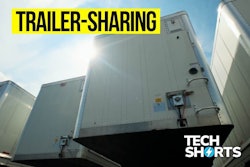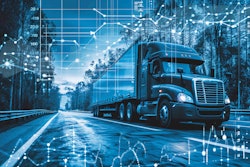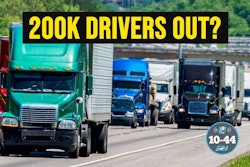Changes in commercial freight happen fast, don’t they?
Look at the rise of e-commerce. The fundamentals of things like ordering by computer had to wait for us to have computers, but it all started in the 1970s. Credit card systems took off. Next day delivery was started with companies like FedEx in the 1970s. Malcolm McLean created the container systems that took off in the 1970s. Atari, Commodore and others introduced society to home computers in the 1980s. Then the internet was born and the world wide web enabled a rapid expansion of electronic commerce in the 1990s. Companies like Amazon and eBay saw tremendous growth. Then cellular smart phones took off with Apple’s iPhone in 2007.
Look at where we are now. I bet even stationed in remote Greenland, you can order your favorite snack food online and have it delivered nearly the next day. Some urban centers have same day delivery now.
It’s been roughly 50 years from the creation of the fundamentals of electronic fund transfers in banking to being able to get your order delivered the same day. Look at how much infrastructure had to be developed to bring that capability into reality. Computers, cell phones, the internet, the cellular network, electronic banking, and more. I bet there were some less-than-visionary people in the 1970s who saw no future in it all because it would take too long, be too expensive and they just couldn’t fathom why change would happen.
Thank you goes to Frederick Smith, Bill Hewlett, Dave Packard, Michael Dell, Steve Jobs, Steve Wozniak, Bill Gates, Jeff Bezos, Pierre Omidyar, and all those other less famous visionaries that made today possible.
50 years. Is that fast? Not really.
Aaron Ward started Montgomery Wards in the 1870s. The first Ward’s catalog was issued in 1872 — a landmark in creating a commercial mail order system. Richard Sears and Alvah Roebuck followed that up, creating Sears & Roebuck in the 1890s. All this was in parallel to growth of rail systems enabled by the transcontinental railroad completed in 1869 and other overland delivery services like the pony express and Wells Fargo stage coaches. The U.S. mail service delivered mail, not packages, and only to centralized locations. You had to go into town to get your mail. It wasn’t until 1896 that Congress and the USPS introduced rural farm delivery (RFD) systems for getting packages closer to your door. Payment in the early days was cash on delivery (COD). You paid in cash when you picked up your package.
Mail order involved placing an order, obviously by mail, then having it fulfilled (a modern term) some weeks later with delivery to a train station or Grange, which you had to travel to, then pay for your package before getting it home. All this was simply awesome to people living in rural America where choice had been limited to whatever the (likely single) regional general store had in stock.
Telecom systems, a term that originated in the 1960s, were just getting going as well in the late 1800s with the revolutionary telegraph system, enabled in parallel with the rail system expansion. Phones did not come into vogue until after 1900. One report states Bell/AT&T’s network in 1910 had 5.8 million telephones, barely touching a fraction of the U.S.
By 1920, you could, in some regions, order something by phone and have it delivered to your home. It might take a few weeks.
Roughly 50 years. Again.
A massive amount of parallel technology evolution and infrastructure is needed to make the impossible possible. It happens again and again in the U.S.
The ability for you to order something from your smartphone and have it delivered in an hour has some deep roots going back to the 1870s. Massive change was needed. Massive innovation was needed. Massive infrastructure was needed. Spending was needed. Companies figured out how to become more profitable. Some companies failed.
But change was inevitable. The innovators, the risk takers, the pioneers, the market place, society, government all pushed forward. Even the reluctant ones had to came along.
Change is like that.
Commercial freight is constantly changing. Fleets, OEMs, shippers, governments, society, and more are always dealing with changes in freight. Eighty years ago, most of your freight was moved by steam train. Cargo ships were small and loaded and unloaded by hand by throngs of dock workers. Today, most of your freight travels by a series of large diesel trucks then smaller gasoline ones. Ships are massive and freight is containerized. Thirty years ago, we bought most of our products in brick-and-mortar stores. Now a significant share of purchasing is via the internet and delivered to our doorsteps with a supply chain that stretches around the world.
Where will we be in 50 years’ time?
I know only two sure things about the future: the future is not going to be the same, and I won’t be here to see it.
Hopefully it’s better for our descendants.













